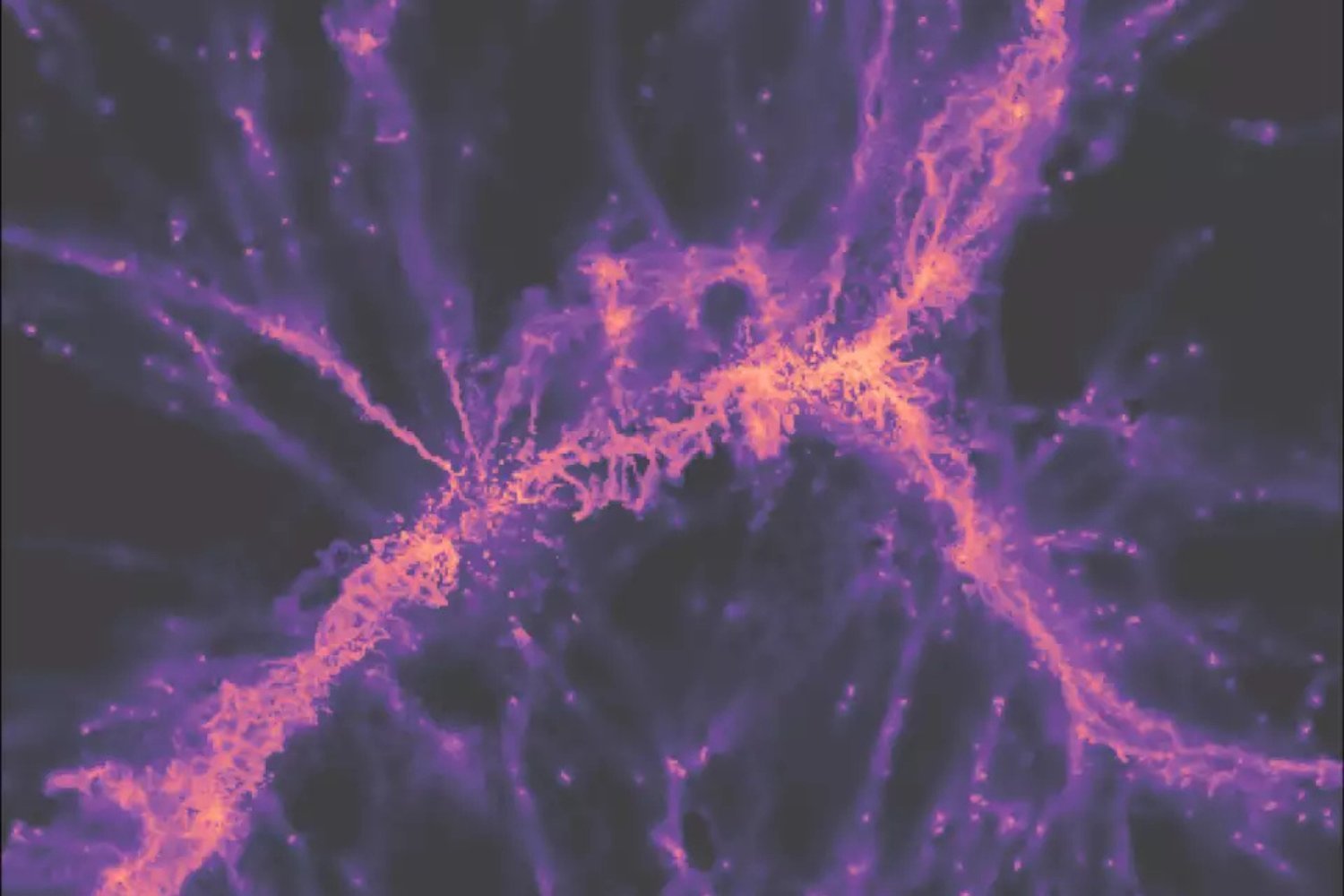
Researchers compiled hundreds of astronomical observations into a high-definition image of a cosmic filament, part of the megastructure that undergirds the universe’s matter.
The filament connects two galaxies that date back to when the universe was a youthful 2 billion years old (it is now about 13.77 billion years old). It showcases the way a vast, but hidden part of the universe contributes to the shape of structures we can see, such as ancient galaxies. The team’s research describing the imaging was published late last month in Nature Astronomy.
“By capturing the faint light emitted by this filament, which travelled for just under 12 billion years to reach Earth, we were able to precisely characterize its shape,” said Davide Tornotti, a doctoral student at the University of Milano-Bicocca and lead author of the study, in a Max Planck Institute for Astrophysics release. “For the first time, we could trace the boundary between the gas residing in galaxies and the material contained within the cosmic web through direct measurements.”
Distribution of matter in the early universe was much more uniform than today, when dense agglomerations of matter are interspersed through space as black holes, galaxies, you name it. Over time, that uniform matter distribution drifted into regions of higher density, strung across the universe like daisy chains—the cosmic filaments linking those galaxy clusters. Some cosmic filaments are even larger than the 3-million-light-year-long structure investigated by the recent team; for example, the Hubble Space Telescope previously spotted a 13-million-light-year-long filament.
The researchers took the image using the Multi-Unit Spectroscopic Explorer, or MUSE, a spectrograph installed in the European Southern Observatory’s Very Large Telescope. The Very Large Telescope resides at ESO’s Paranal Observatory in Chile’s Atacama Desert and is currently under threat (somewhat ironically) by plans to construct a green energy project in the desert. ESO scientists and administrators are bemoaning the plan, which they say will severely pollute some of the clearest skies in the world for ground-based astronomy.
Data collection for the recent image took hundreds of hours, yielding a deeply detailed view of the filament’s morphology and the density of the structures as predicted in the leading dark matter model for the universe.
The cosmic web is the superscale structure of the universe; it covers everything from the shape and orientation of galaxies to the way mass is distributed across the universe. That mass necessarily includes dark matter, or the roughly 27% of matter in the universe that scientists know exists but cannot observe directly, because it appears to barely interact with ordinary matter. Dark matter is only indirectly observable through its gravitational interactions with matter.
The cosmic web’s structure will become clearer through Euclid Space Telescope data. Euclid’s charge is to decode the mysteries of dark matter and dark energy and assemble an atlas of the cosmos—the largest-ever 3D map of our universe. In October, ESA scientists revealed the first chunk of that atlas, with a 208-gigapixel image covering 14 million galaxies.
“As people say in Bavaria: ‘Eine ist keine’—one doesn’t count,” said Fabrizio Arrigoni Battaia, a staff scientist at the Planck Institute, in the same release. “So we are gathering further data to uncover more such structures, with the ultimate goal to have a comprehensive vision of how gas is distributed and flows in the cosmic web.”
Indeed, if more images are equally detailed, and offer as much information about the nature of the cosmos, the space-loving public will benefit as much as scientists.
https://gizmodo.com/app/uploads/2025/02/cosmic-webb-filament-simulation.jpg
2025-02-13 09:50:38